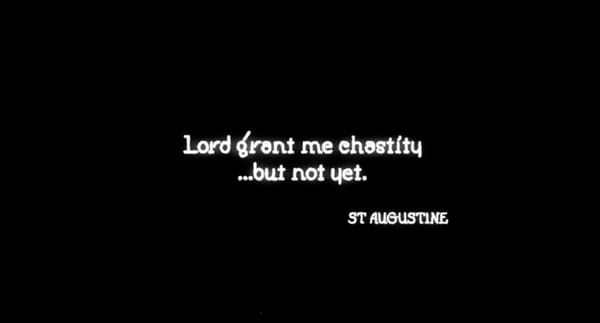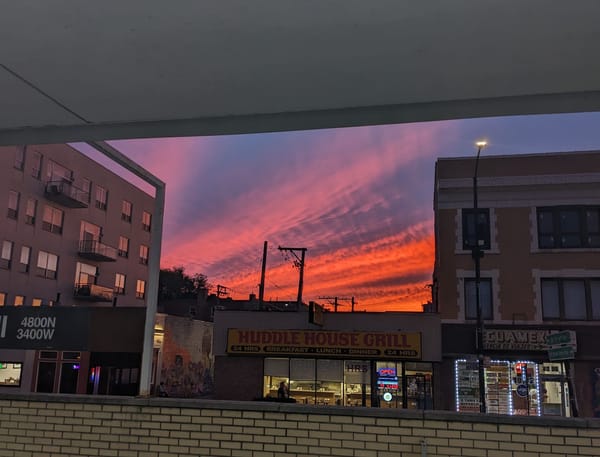Strange Horticulture (2022)
I find myself thankful for any experience of an artwork which gets me thinking afterward, whether it’s about the subject of the work itself or how to go about my own.

Before we get into the main post, I'd like to highlight that I had a poem published in Stone Circle Review a while back in case you missed it then! You can click here to read it and click here to see the painting in the Art Institute that inspired it.
Self-promo ends here, on with video game talk.
I have a ridiculous Steam backlog and a new mandate for myself. I’m not allowed to buy a new game unless I play one in the pile first. So here we go with the first from the backlog, purchased in a long-ago Steam sale: Strange Horticulture, developed by Bad Viking and published by Iceberg Interactive.
In Strange Horticulture, you’ve inherited a plant shop of the same name from your late uncle. You own a cat named Hellebore, which you can pet, and you have a few friends around town, including a librarian who acts as a reference guide and a wanderer who sends you letters about where to find interesting plants. People in your town request plants to cure various ailments or help them in more supernatural ways. For instance, one plant that purports to help you find gold was a popular one among customers. The only way to make a customer move on so you can serve the next is to give them the right plant. Occasionally, there are a couple of options for the “right” plant which can make the narrative branch in a couple different directions. Sometimes the branch only changes what happens to that customer; other choices have slightly further-reaching consequences. As the days pass, it becomes clear that a monster is on the loose in the land near your town, and you might be the only one who has the botanical know-how to bring it to heel.
The plants are by far the most delightful part of the game. They’re pretty and creative with beautiful nods to real-life plants and folk beliefs. Each plant obtained gets added to a set of shelves which the player can scroll through and arrange to their liking; I sorted mine by mushrooms, flowers, fruits and leaves. There’s also an option to label the plants yourself as you identify them, which I enjoyed for my first playthrough, but tired of by the end. Luckily, there’s an auto-label option to enable which names plants as you match them to encyclopedia entries. I enabled this for my next couple of playthroughs.

The game’s visual and aural ambience was perfectly pitched, with welcome moody touches like rain on the windows of Strange Horticulture’s greenhouse. The game’s simple art style didn’t work quite as well for its character portraits, however. Shop patrons look Bitmoji-like, and though I can appreciate a need for simplicity in game development, their cartoonishness stood out as childish against the more detailed shop desk interface and the livelier plants.
In general, Strange Horticulture really does a lot with a little. The main events of the game are mostly described and sometimes barely illustrated, something that I think does the monster at its heart, the Dendrew, a great service. The scariest monsters are always those whose form you can’t know. However, the scarcity of detail in some areas did feel like a lack. The map teased many locations to explore – each square of the map is clickable and therefore visitable – but many are simply empty. When you do visit another named town, there is usually only one person to speak to there, and then the location isn’t used again. I would’ve wanted to get more out of the towns in the area, especially knowing that my actions directly affected whether or not they would be terrorized by a violent monster.

But the point of Strange Horticulture is really the plants, and again, the plants had me hooked. I read each and every plant description as soon as I collected them, and loved the puzzle of matching plants to descriptions and vice versa. This was never difficult, but I could still appreciate when the game designers had deliberately left a clue, or obscured one, in the booklet for matching its plant. For instance, one helpful plant was given a harmful lookalike, making for an easy and impactful mix-up if you weren’t careful.
I was also delighted – as in, I did gasp out loud – when one day in-game a delivery man handed over glass paraphernalia for making elixirs out of my plants. However, I was disappointed to learn there were only a few elixirs to make in the game, and those few elixirs had very limited applications. I’d love to see what the development team could do with an expanded version of elixirs in the game, or even a future game that relies on recipe-making.
Narratively, my one disappointment with Strange Horticulture was that few choices I made had consequences for others down the line. Only one choice I made early on affected the options I had at the end of the game, and that was the choice to give a psychic a soothing plant instead of something which amplified her abilities. I chose not to soothe her because I wanted to know more about her predictions; my curiosity ended up punished by the game. This key choice closed many endings and even a couple of elixir recipes from me, so I had to play again to expand my options.
Otherwise, many of the narrative choices makes conflict morally with one another with no real impact to the ending. For instance, I could choose to literally murder one of my fellow townspeople while still helping save a group of nuns from slaughter, and these two choices in no way cancel each other out. I was surprised by how easy it was to mete out terrible punishments to people without the player character facing any narrative consequences, which made even the “good” endings I chose feel a little empty.
Though I wanted more from Strange Horticulture in some places, overall, I had a thoroughly pleasant four hours on that first playthrough where I didn’t want to put the game down. Everything about its sound design and interfaces were thoughtful, atmospheric, and beautiful. I find myself thankful for any artwork that gets me thinking afterward, whether it’s about the subject of the work itself or how to go about my own. Despite some small qualms with the style and breadth of the game, I left Strange Horticulture excited to go write and make things myself. For that alone I’d recommend it!
Other notes/miscellany:
- I also played Dredge semi-recently and loved that, but it was not part of my backlog, so I figured I should talk about Strange Horticulture first. That one is also eldritch fun, but for fishing instead of plants.
- Lee Potts, the editor of Stone Circle Review, recently published a chapbook with Bottlecap Press, We'll Miss the Stars in the Morning. You can order it here!
- I read this article about a "debate" hosted by Bari Weiss's Free Press organization and found its perspective insightful. Bari Weiss is terrible and terribly popular for extremely stupid (and societally harmful) reasons.
- I've been having too much fun at Goodwill in past weeks and recently picked up a dress that I'm going to try to dye. Anybody have any experience with Rit synthetic dye and have any tips? Or do you have a very large stainless steel pot I can borrow/ruin forever, since you can't use dye pots for cooking afterward? Any and all help appreciated.
- Has anyone else seen Hundreds of Beavers? I saw it last week at the Music Box and it was an experience for the ages. (Sold out. Late night. Audience hooting and hollering. One of the producers dressed as a rabbit decapitating another guy dressed as a beaver. You had to be there.)



